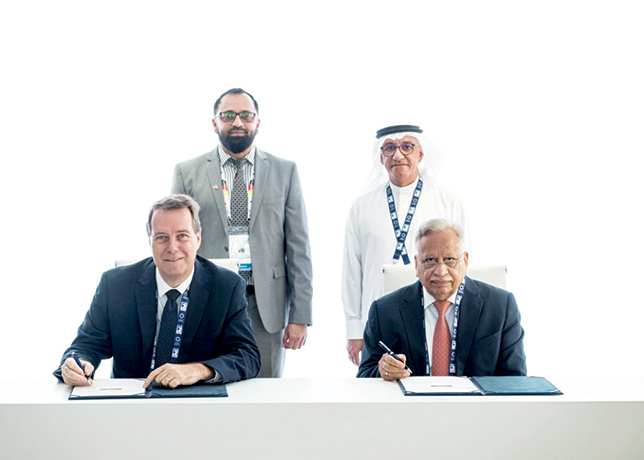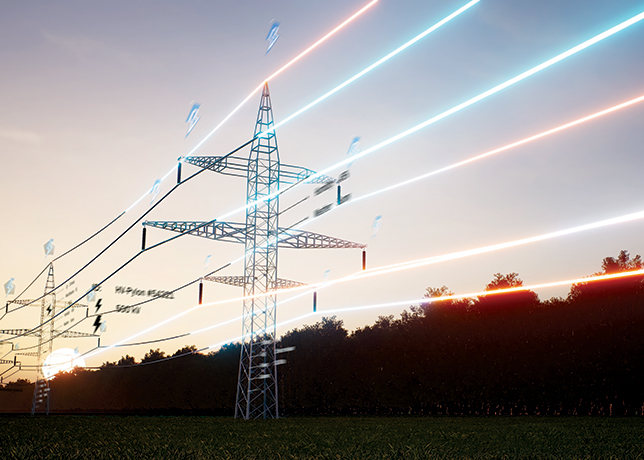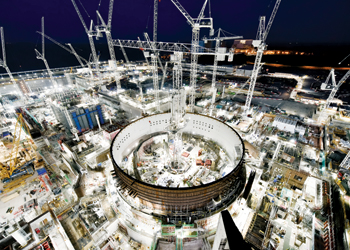
 Projected fuel use by 2050 (Source: ABS)
Projected fuel use by 2050 (Source: ABS)
Amidst the maritime industry's challenges in adopting new technologies and practices to reduce carbon emissions and greenhouse gases, methanol as a marine fuel could be a near-term solution, Panos Koutsourakis of ABS tells OGN
The maritime industry faces challenges in adopting new technologies and operational practices to reduce emissions of carbon and other greenhouse gases.
However, a new ground-breaking series of eight large container vessels capable of being operated on carbon-neutral methanol ordered by Maersk, along with an option for a further four vessels, which are to be built to ABS Class, will mean vessels are capable of operating on carbon-neutral e-methanol or sustainable bio-methanol.
However, a new ground-breaking ABS Class eight large container vessels that can operate on carbon-neutral methanol will mean vessels are capable of operating on carbon-neutral e-methanol or sustainable bio-methanol.
The vessels, ordered by Maersk along with an option for a further four vessels, come with a dual fuel engine setup, which also enables operation on conventional low sulphur fuel.
Spearheading the development of tomorrow’s fuel quality criteria, fuel supply system, and equipment specifications, are the early adopters of clean fuel technologies.
Methanol as a marine fuel is increasingly becoming a viable contributor in shipping’s drive for a clean, sustainable fuel mix, and is providing the experience necessary for the development of stronger marine fuel standards on the seaward journey to decarbonisation.
Using methanol produced from natural gas offers a proven reduction of NOx and SOx emissions, and by producing methanol from renewable sources, shipping can substantially reduce its GHG emissions.
 |
Methanol properties (Source: ABS) |
As with other new fuels entering the market, the concerns of shipowners and other stakeholders are focused on safety, fuel availability and meeting future GHG requirements.
One of the main challenges to owners during this fuel transition is to decide on an alternative fuel or fuels to prepare for 2050.
In November 2020, the Maritime Safety Committee of the International Maritime Organisation (IMO) adopted interim guidelines on the use of methanol as a marine fuel, making ethyl and methyl alcohols options for shipowners and operators. Twelve methanol powered ships are already in operation, with another 10 on order.
Early adoption of any new fuel depends on the demand and the supply landscape. In the case of methanol, even though its trade is evolved globally with more than 70 million tonnes produced annually, its use across many applications and industry sectors may restrict the actual volume needed for the shipping industry unless incentives are introduced.
This could mean methanol being produced synthetically, which could incur extra costs.
Methanol has the advantage of a liquid state and ability to repurpose existing infrastructure to include engines and vessels with efficient retrofits. Onboard containment of methanol is easier than LNG; the liquid fuel has a lower volumetric density than LNG, necessitating comparatively larger containment tanks.
As the main feedstock in methanol production is natural gas, methanol could be made 100 per cent renewable, as it can be produced from a variety of renewable sources such as biomass or electrolysis powered by renewable energy and supported with carbon capture technology.
This makes it a strong candidate fuel for a sustainable future in which shipping is powered by 100 per cent renewable fuels.
FUEL PROPERTIES
Methanol is a colourless liquid at ambient temperature and pressure with a characteristic pungent odour. It is easier to store and handle than liquefied natural gas (LNG), ammonia and hydrogen fuels.
Methanol has the highest hydrogen-to-carbon ratio of any liquid fuel, a relationship that potentially lowers the CO2 emissions from combustion when compared to conventional fuel oils.
When used as the primary fuel, methanol can reduce CO2 emissions by around 10 per cent.
However, methanol has the potential to be a carbon-neutral fuel in the future if it is produced renewably through biomass/biogas or renewable electricity.
Methanol’s specific energy of 19,700 kJ/kg is much lower than that of LNG and conventional liquid fuels.
For the same energy content, methanol requires about 2.54 times more storage volume than conventional fuels.
When comparing methanol to LNG, an overall decrease in the effective volumetric density of LNG is to be accounted for due to packaging factors for cylindrical tanks, insulation and filling factors, boil-off gas, and custody transfer losses.
If spilled or leaked into the environment, methanol has significantly less impact than conventional hydrocarbon fuels.
It dissolves readily in water, and only very high concentrations in the environment create lethal conditions or any changing effect on the local marine life.
This means that a methanol spill would result in limited damage to the environment except for the release of carbon into the marine ecosystem.
Methanol in the ocean is common, produced naturally by phytoplankton, and is readily consumed by bacteria microbes, thus entering and supporting the food chain.
REGULATORY APPROVAL
The general safety principles of the IMO’s IGF and IGC Codes provide the framework for the use of low-flashpoint marine fuels such as methanol.
Common safety principles such as fuel tank protective location, double barriers on fuel supply lines, ventilation and gas detection, hazardous area classification, and explosion mitigation are equally applicable to all low-flashpoint fuels.
However, the specific fuel characteristics may require specific safety features.
For methanol, any fuel leaks produce heavier-than-air vapours requiring additional detectors that are necessary as the fuel is toxic if ingested or inhaled – fuel characteristics which would be considered during the risk assessment analyses.
The adoption in November 2020 of IMO Interim Guidelines for the Safety of Ships Using Methyl/Ethyl Alcohol as Fuel, covers considerations for ship design and arrangement, as well as fuel containment system, materials, pipe design, bunkering, fuel supply, power generation, fire safety, explosion prevention, hazard area classification, ventilation, electrical installations, control systems, crew training and operations.
The fuel itself does not have cryogenic complexity and it is a liquid at ambient conditions, making it simpler to handle and closer in operation to conventional bunker vessels.
VESSEL APPLICATIONS
The adoption of low carbon and net carbon-neutral fuels for large vessels is more challenging than for smaller ones.
Using fuels with low energy content, such as methanol, would require a significant redesign, not least because their fuel tanks would need to be expanded to store enough energy for longer deep-sea travel.
However, methanol is more suited to storage in near conventional fuel tanks, which can be easier to accommodate in ship designs than other low-flashpoint fuels, and under MSC.1/Circ.1621 5.2.1 can also be bound by a vessel’s shell plating when stored below the lowest possible waterline.
The trade and regulatory landscape of short-sea vessels make them ideal candidates for early adoption of new technologies such as methanol.
Fuels such as methanol have strong potential to lower the carbon footprint of shipping, but one of methanol’s challenges is its low energy content, and the comparatively lower amount of energy it can store in the tanks of a ship.
That said, compared against other alternate fuels, methanol is relatively efficient at energy storage by volume based on physical tank space.
Consequently, short-sea shipping can accommodate the use of fuels with low energy content – such as methanol – that require more frequent bunkering.
NEAR TERM POTENTIAL
The benefits of reduced emissions from burning methanol could be a significant contributor to reducing greenhouse gas emissions from the maritime industry.
Existing methanol trade infrastructure can also be an important factor for the cost and availability of methanol over other alternative fueling options.
Using methanol as a fuel in methanol carriers for propulsion and power generation, along with the development of efficient and feasible dedicated propulsion systems, has already seen an increase in new build cargo vessels powered by methanol.
If methanol is produced renewably, these tankers could have an even greater potential to reduce lifecycle emissions while concurrently improving the renewable methanol fuel supply chain for other applications.
The advantage of methanol over other gas fuels is its liquid state and ability to re-purpose existing infrastructure to include engines and vessels with efficient retrofits.
Retrofitting a vessel’s tanks from conventional fuel oil, ballast, or slop to hold liquid methanol fuel is easier than installing LNG tanks.
Also, methanol is significantly easier and more economical to store on board than gas.
One of the challenges of methanol as an alternative fuel is the lower energy content when compared to conventional fuel oils.
However, as methanol is a liquid at ambient temperature and pressure, tanks can be converted with minor retrofitting to hold larger volumes of methanol that may be needed for an equivalent amount of energy.
Further methanol applications in marine fuel may only require a scale-up of existing trade, storage, and generation activities, while bunkering facilities and fuel supply systems are to be developed and scaled-up.












































































-...jpg)












